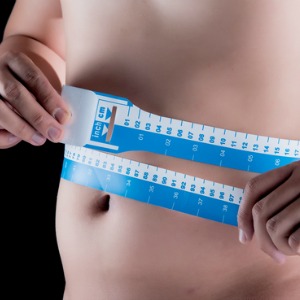Treatment for Eating Disorders
 ANOREXIA NERVOSA
ANOREXIA NERVOSA
Anorexia Nervosa is characterized by an irrational fear of becoming fat coupled with a relentless pursuit of thinness. People with anorexia go to extremes to reach and maintain a dangerously low body weight. But no matter how much weight is lost, no matter how emaciated they become, it’s never enough. The more the scale dips, the more obsessed they become with food, dieting, and weight loss.
There are two types of anorexia. In the restricting type, weight loss is achieved by restricting calories. Restricting anorexics follow drastic diets, go on fasts, and exercise to excess. In the purging type, people get rid of calories they’ve consumed by vomiting or using laxatives and diuretics.
The key features of anorexia nervosa are:
- Refusal to sustain a minimally normal body weight
- Intense fear of gaining weight, despite being underweight
- Distorted view of one’s body or weight, or denial of the dangers of one’s low weight
Anorexia is most common in adolescent girls and young women, with a typical age of onset between the ages of 13 and 20. But people of all ages—including men and children—can suffer from anorexia.
While the physical and emotional consequences of anorexia can be devastating, the good news is that it’s a treatable condition. With the right treatment team, people with anorexia can and do get better. They can regain their health, learn to eat normally again, and develop healthier attitudes about food and their bodies.
 BULIMIA NERVOSA
BULIMIA NERVOSA
Bulimia Nervosa is characterized by frequent episodes of binge eating, from twice a week to multiple times a day, followed by frantic efforts to avoid gaining weight.
During an average binge, a bulimic consumes 3,000 to 5,000 calories in one short hour. After it ends, the person turns to drastic measures to “undo” the binge, such as taking ex-lax, inducing vomiting, or going for a ten-mile run.
There are two types of bulimia, distinguished by the methods the bulimic uses to compensate for the binge eating. In the purging type of bulimia, people physically purge the food from the body by throwing up or using laxatives, enemas, or diuretics. In the nonpurging type of bulimia—which is much less common—bulimics make up for their lack of restraint by fasting, exercising to excess, or going on crash diets.
The key features of bulimia nervosa are:
- Regular episodes of out-of-control binge eating
- Inappropriate behavior to prevent weight gain
- Self-worth is excessively influenced by weight and physical appearance
Women are much more likely than men to develop bulimia; approximately 90% of those with the disorder are female. Younger women are particularly at risk. Bulimia typically begins during the late teens or early twenties, often following a strict period of dieting or a stressful life event.
 BINGE EATING DISORDER
BINGE EATING DISORDER
Binge Eating Disorder is characterized by compulsive overeating in which people consume huge amounts of food while feeling out of control and powerless to stop.
A binge eating episode typically lasts around two hours, but some people binge on and off all day long. Binge eaters often eat even when they’re not hungry and continue eating long after they’re full. They may also gorge themselves as fast as they can while barely registering what they’re eating or tasting.
The key features of binge eating are:
- Frequent episodes of uncontrollable binge eating
- Feeling extremely distressed or upset during or after bingeing
- No regular attempts to “make up” for the binges through vomiting, fasting, or over-exercising.
People who binge eat struggle with feelings of guilt, disgust, and depression. They worry about what the compulsive eating will do to their bodies and beat themselves up for their lack of self-control. They desperately want to stop binge eating, but they feel like they can’t.
 EMOTIONAL EATING
EMOTIONAL EATING
Emotional Eating is when you eat in response to your feelings instead of to hunger. Experts estimate that 75% of overeating is caused by emotions.
(WebMD)
Emotional eating has become a short term solution for many people to provide themselves with comfort. Mistakenly people turn to food to try to heal their emotional problems and before they realize it, eating becomes an unhealthy coping skill which prevents them from learning other coping skills that could more effectively resolve their emotional distress.
ARE YOU AN EMOTIONAL EATER?
- Do you ever eat without realizing you’re even doing it?
- Do you often feel guilty or ashamed after eating?
- Do you often eat alone or at odd locations, such as parked in your car outside your house?
- After an unpleasant experience, such as an argument, do you eat even if you aren’t feeling hungry?
- Do you crave specific foods when you’re upset, such as always desiring chocolate when you’re feeling depressed?
- Do you feel the urge to eat in response to outside cues like seeing food advertised on television?
Do you eat because you feel there’s nothing else to do? - Does eating make you feel better when you’re down or less focused on problems when you’re worried about something?
 WEIGHT LOSS SURGERY
WEIGHT LOSS SURGERY
It is recommended that individuals who are considering having Gastric Bypass/ Lap-Band surgery or who have already had surgery participate in therapy. Making the decision to have surgery can be a difficult one and it is important to determine what the best decision is for you. It can be helpful to have a safe place to discuss your feelings during the decision making process. Having bariatric surgery does not by itself guarantee successful weight loss – surgery is only one of many tools that will help you achieve your goals.
Some key factors to success include: following the diet, exercise, and proper use of nutritional supplements. Additionally, receiving ongoing support to work on any psychological or emotional issues that contributed to the weight problems in the first place or help the individual to adjust to new experiences post-surgery offer increased long-term success.
 EXERCISE ADDICTION
EXERCISE ADDICTION
To the common eye, it appears as if these people have a deep commitment to exercise, and they are often admired by their friends. However, the underlying root of their motivation is fear-based and unhealthy.
The exercise addict needs exercise. Unfortunately, there can be costs to both physical and emotional health. Too much exercise and the body breaks down physically. Bones suffer, as do tendons, ligaments, even muscles. People become more susceptible to colds and flu. Osteoporosis may set in. In extreme cases, the menstrual cycle may cease.
Emotionally, the person is consumed with thoughts of exercise–always feeling he or she isn’t doing enough. Exercise becomes the number one priority. Eventually, other areas of life begin to crumble–relationship, intimacy, work, school, family and friends. With exercise always on the mind, exercise addicts constantly calculate when they’re going to the gym, how hard they worked out, how many calories they burned and what that allows them to eat. Even when they’re sick or injured, they cannot stop working out.
In cases of exercise obsession, there are two aspects to getting hooked: 1) the visual stimulant and 2) the chemical stimulant. For good or bad, the body changes as a result of exercise. Thinner thighs, smaller midriffs, bigger biceps–exercise-obsessed people get hooked on the changes they see in the mirror and want more. The chemical hook is a result of the release of endorphins that produce a feeling of euphoria, the so-called “runner’s high” to which people can become addicted. Does this sound familiar?
Symptoms of Over-Exercising
- Elevated resting heart rate
- Elevated body temperature
- Overall sense of fatigue or run-down feeling
- Achy muscles and joints
- General feeling of malaise/loss of interest in exercise or other activities
- Irritability
- Sleep disturbances
 BODY IMAGE CONCERNS
BODY IMAGE CONCERNS
Body image is how you see yourself when you look in the mirror or when you picture yourself in your mind. It’s what you believe about your own appearance (including your memories, assumptions, and generalizations). It’s how you feel about your body, including your height, shape, and weight. It’s how you sense and control your body as you move, and how you feel in your body, not just about your body.
Negative body image is a distorted perception of your shape — you perceive parts of your body unlike they really are. You are convinced that only other people are attractive and that your body size or shape is a sign of personal failure. You feel ashamed, self-conscious, and anxious about your body. You feel uncomfortable and awkward in your body.
Positive body image is . . .
- A clear, true perception of your shape — you see the various parts of your body as they really are.
- You celebrate and appreciate your natural body shape and you understand that a person’s physical appearance says very little about their character and value as a person.
- You feel proud and accepting of your unique body and refuse to spend an unreasonable amount of time worrying about food, weight, and calories.
- You feel comfortable and confident in your body.
People with negative body image have a greater likelihood of developing an eating disorder and are more likely to suffer from feelings of depression, isolation, low self-esteem, and obsessions with weight loss.
We all may have our days when we feel awkward or uncomfortable in our bodies, but the key to developing positive body image is to recognize and respect our natural shape and learn to overpower those negative thoughts and feelings with positive, affirming, and accepting ones.
Accept yourself — Accept your body.
Celebrate yourself — Celebrate your body.
Reprinted with permission from http://www.helpguide.org/. C 2008 Helpguide.org. All rights reserved
SOURCES: www.helpguide.org, www.about.com, www.alive.com, www.nationaleatingdisorders.org.


